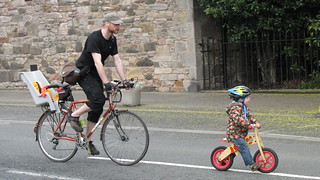Someone who knows more about it will correct me if I'm wrong but the point where things like recycling, health and safety, quality etc go mainstream is when the desired behaviour stops being seen as the product of individual decisions and starts to be seen as system failure. Solutions stop being seen as individual behavioural modifications and start being seen as system modifications.
There was a tweet going around the other day: British complain that cyclists jump red lights and the Danish engineer says, "what's wrong with your design?". He sees it as a system failure.
I'm not sure cycling safety is much different. Part of mainstreaming it would be to stop treating each death or serious injury as a sad, isolated incident and instead draw them together and present the problem as systemic and the people as victims of a transport system that sees death (drivers, cyclists and pedestrians) as inevitable and, by doing nothing, treats them as acceptable collateral damage.
Part of it, and perhaps a difficult part of it, would be to stop seeing individual drivers as errant fools or dangerous psychopaths (even if some of them are) and start seeing them too as the outcome of a system that at best fails to adequately sanction those behaviours and at worst promotes them. This would identify the real problem as the people who refuse to change the system to address its failures.
That seems to me what the blog in the OP is saying.

 posts
posts
